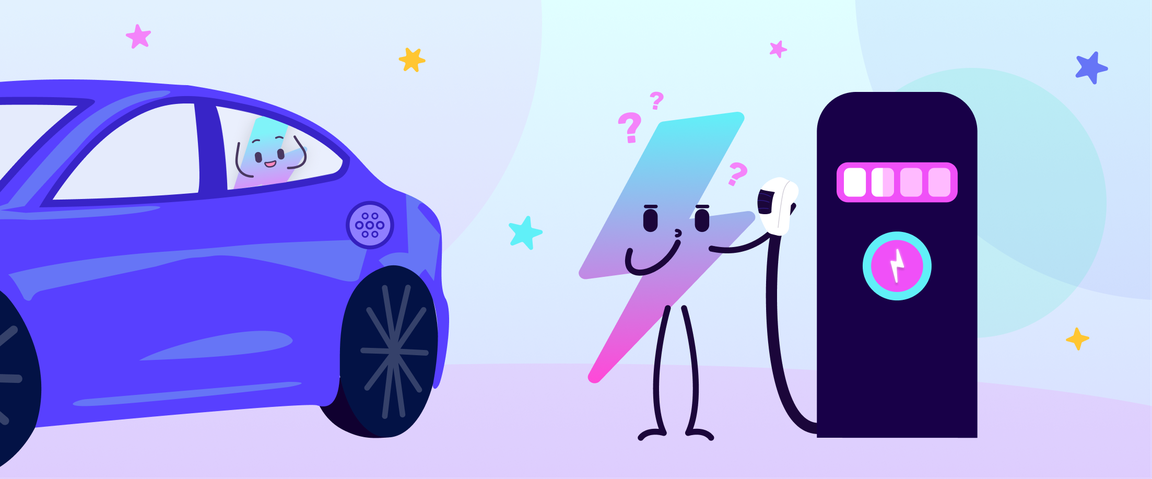November 2022
|Last updated:April 2024
What affects your EV charging speed?
When it comes to EV adoption, a lot has been said about the UK National Grid. How will it cope with the increase in demand for electricity? Will enough electricity be available to charge hundreds of thousands of EVs at any time?
But with over 593,000 electric vehicles already in the UK, how - if at all - does the grid affect current charging speeds? And what are the other factors that can lessen the kW from a charge point?
Let’s get plugged in…
Grid capacity
Be it local or national, the UK grid has become synonymous with EV charging. There are plenty of myths and misconceptions surrounding the strain EV charging brings to the grid, and how sustainable it will be long-term (with a particular focus on widespread EV adoption). So, let’s address this now.
In 2002, UK energy demand peaked at 62 GW - since then, energy demand has fallen around 16% due to vast improvements in energy efficiency.
What does this mean in reality?
In black and white terms, even if every UK driver switched to an EV tomorrow, the National Grid predicts demand would only increase by 10%. Less than what the UK was consuming in 2002! Yes, the grid is well-equipped to deal with current and future EV charging behaviour.
With regards to future energy sustainability, Graham Cooper (Head of Future Markets, National Grid) explains:
There is definitely enough energy and the grid can cope easily. The growth in renewable energy means this is not static and smart metering will make this more efficient. For example, the growth in wind power from the extra offshore wind farms being developed will adequately meet the future demand for electrifying transport – an extra 100 terawatt hours (TWh) from our current 300 TWh consumed.
Despite this, during peak hours, the local grid capacity can hypothetically affect charging speed - dependent on demand. However, it is far more likely that your charging speed is affected by something else…
Power-sharing charging hubs
Picture this scenario: you’ve pulled up at a busy 350 kW charging station with four other cars already plugged in. You plug in your EV only to find that you’re charging at 70 kW - why? Chances are you’ve just pulled up at a power-sharing hub.
Depending on how each charging site is constructed, power-sharing can occur between chargepoints to maximise grid connections. There are two ways this can happen:
Dual charging on a single chargepoint. When two cars are plugged into the same chargepoint, the total kW is split (e.g. a 50 kW chargepoint will deliver 25 kW to each connected vehicle). If only one EV is connected to a dual chargepoint, it will receive the maximum kW available.
Similarly, busy charging hubs will restrict the maximum kW when energy is in high demand. This happens when multiple electric vehicles are charging at the same charging hub location. For example, if 5 charging stations offer 350 kW, and 5 EVs are plugged in, it’s more than likely you’ll average about 70 kW throughout your charging session.
Maximum charge rate of your EV
Every EV has a maximum rate of charge - and these are all different! The maximum charge rate is the EVs battery charging capacity; plugging into a charging station that exceeds this threshold will mean that the EV will only draw as much power as is safe.
For example, the Volkswagen ID.4 has a maximum rate of charge of 118 kW, meaning that despite being plugged into a 350 kW charger, it will never draw more than 118 kW. The ID.4 also has an onboard charger with a max rate of 7.2 kW, which means that when plugged into a 22 kW AC charger, the EV will never draw more than 7.2 kW.
So, remember to check if your EV can utilise the maximum power at a charging station before plugging it in.
State of charge
The state of charge is your EVs battery percentage of charge (i.e. 34% remaining).
EV batteries can pull more power from a chargepoint when its battery is between 20-80%. If you started charging when your battery is at 8% or 89%, the charge rate will slow significantly - this is due to the EV protecting the battery from large amounts of energy.
The type of charge (AC/DC)
Are you plugged into an AC or DC charger? AC chargers typically charge at a lower rate of energy as the storage conversion happens through the EVs onboard charger rather than through the charging station cable/connector (as with DC charging stations).
If you need a refresher on all things charging speed (AC/DC) and connector type, check out our blog: EV Connectors and Speeds.
Ambient and battery temperatures
The optimum temperature for lithium-ion battery cells falls between 15 - 45 degrees celsius. If the battery cell temperature falls outside these parameters, the battery cell can be damaged.
To keep the battery at optimum temperature, the EV either releases coolant or gradually warms the battery to ensure it does not short-circuit. In either case, the EV will reduce charging speeds to ensure the battery is not damaged.
To learn more about how seasonal temperatures affect battery capacity and charging speeds, read our blog: How does cold weather affect EV battery capacity?
Cable limits
When it comes to EV cables, size matters. To deliver high amounts of electricity cables must have a perfect balance of having a large enough diameter to deliver the power but not so large that they become too heavy from additional insulation.
Essentially, cables built from thicker wires offer less resistance to the flow of energy, which in turn means faster-charging speeds!
Feeling enlightened or do you think something was missing? Let us know by sharing your feedback.
Interested in learning more? Head over to our Electroverse Community area for more electrifying content.




